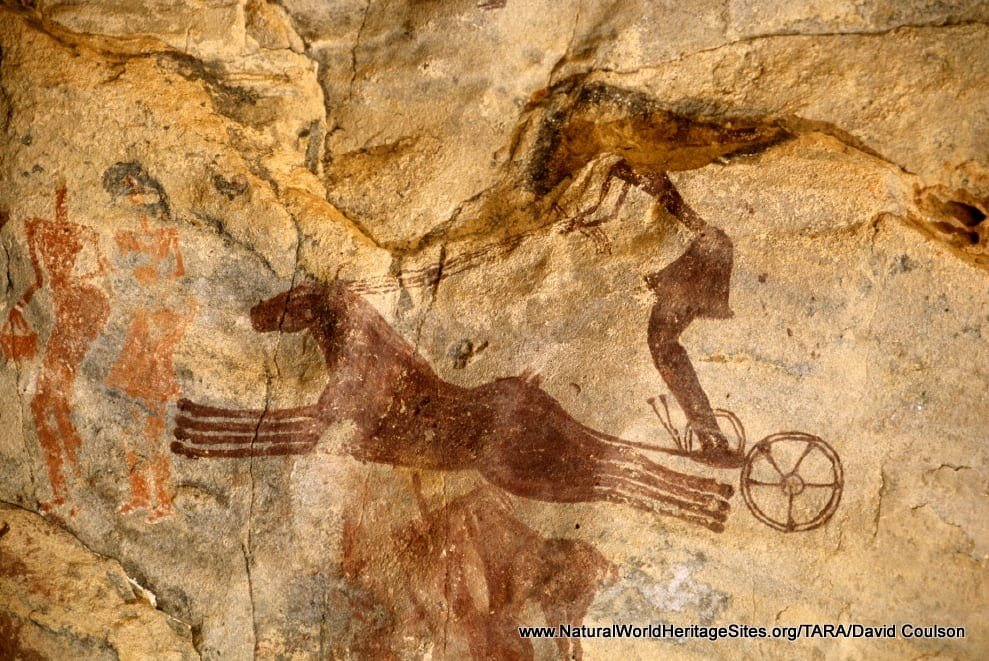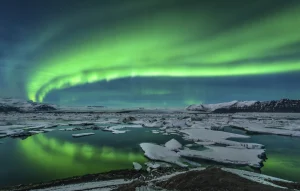Earth’s Changing Orbit Turned Green Savannah Into The Sahara Desert, Scientists Found
6th Jan 2024
Around 6,000-11,000 years ago, what we now know as the Sahara Desert was a green savannah with rivers and lakes. Sahara is the largest hot desert in the world, however, over the past eight million years, more than 230 greening events in the Sahara, occurring approximately every 21,000 years, have been identified by scientists using marine and lake sediments. These events required a significant reorganization of the atmospheric system to bring rainfall to the hyper-arid region.
A breakthrough by a team of climate modellers and anthropologists explains how Earth’s orbital precession, influencing the Sahara’s sensitivity to climate change, led to recurring greening events and holds crucial insights for future climate predictions.
Unveiling the Ancient Secrets of the Sahara
Algeria’s Tassili N’Ajjer plateau, Africa’s largest national park, houses a remarkable open-air museum with over 15,000 etchings and paintings dating back 11,000 years. Contrary to today’s arid landscape, these artworks depict a vibrant Sahara during the Green Sahara period approximately 6,000-11,000 years ago called the Green Sahara or North African Humid Period, revealing climatic shifts every 21,000 years over eight million years.

Abundant climatological evidence underscores that the Sahara flourished with wooded savannah ecosystems and boasted numerous rivers and lakes in what we now recognize as Libya, Niger, Chad, and Mali.
A groundbreaking study led by a team of climate modellers and anthropologists has successfully unveiled the mysteries of these recurrent greenings, explaining the Sahara’s sensitivity to changes in Earth’s orbit. Analyzing variations in precession—the Earth’s wobble on its axis—the researchers discovered a correlation with the timing of humid periods. During warmer Northern Hemisphere summers, this precession-driven phenomenon intensified the West African Monsoon, shifting the rainbelt northwards and transforming the arid landscape into a flourishing savannah.
The study also revealed a crucial connection between eccentricity cycles, ice sheets, and the absence of humid periods during ice ages. Large glacial ice sheets during these periods counteracted the influence of precession, hindering the expansion of the African monsoon system. This interplay between Earth’s orbit and the Sahara acted as a gate, controlling the dispersal of species between North and sub-Saharan Africa.
Why Earth’s orbit is changing?
The reason wetter times happen in North Africa about every 21,000 years is because of changes in how Earth moves around the sun. The Moon and other planets in our solar system influence gravity, so the orbit of the Earth around the sun is not constant. This happens in cycles called Milankovitch cycles, which affect how much sunlight Earth gets.
There are three types of Milankovitch cycles. One cycle, every 100,000 years, changes the shape of Earth’s orbit between circular and oval (eccentricity). Another cycle, every 41,000 years, alters the tilt of the Earth’s axis (obliquity). These cycles are responsible for causing ice ages over the past 2.4 million years.
The third cycle is precession, a wobbling of Earth’s axis every 21,000 years. The similarity between the precession cycle and the timing of humid periods shows that precession is the main reason for these changes. Precession affects the differences in seasons, making one hemisphere have more extreme seasons than the other. During warmer summers in the Northern Hemisphere, there was more rainfall in North Africa, leading to humid periods and the growth of vegetation in the region.
The impact of the Sahara desert study
The findings highlight the environmental impact of Earth’s orbital cycles on the Sahara, offering insights into past climate changes that influenced the dispersal and evolution of species, including humans. As climate change driven by human activities accelerates, the study’s implications become increasingly relevant. Warmer temperatures in the future could enhance monsoon strength, affecting rainfall in North Africa and beyond.
The team’s refined climate model provides a valuable tool for predicting future greening in response to climate change, allowing a better understanding of potential societal and environmental implications. By unravelling the intricate dance between Earth’s orbit and the Sahara’s climatic shifts, this research offers a compelling narrative of our planet’s past and a crucial guide to navigating its future.






Thank you for your comment! It will be visible on the site after moderation.